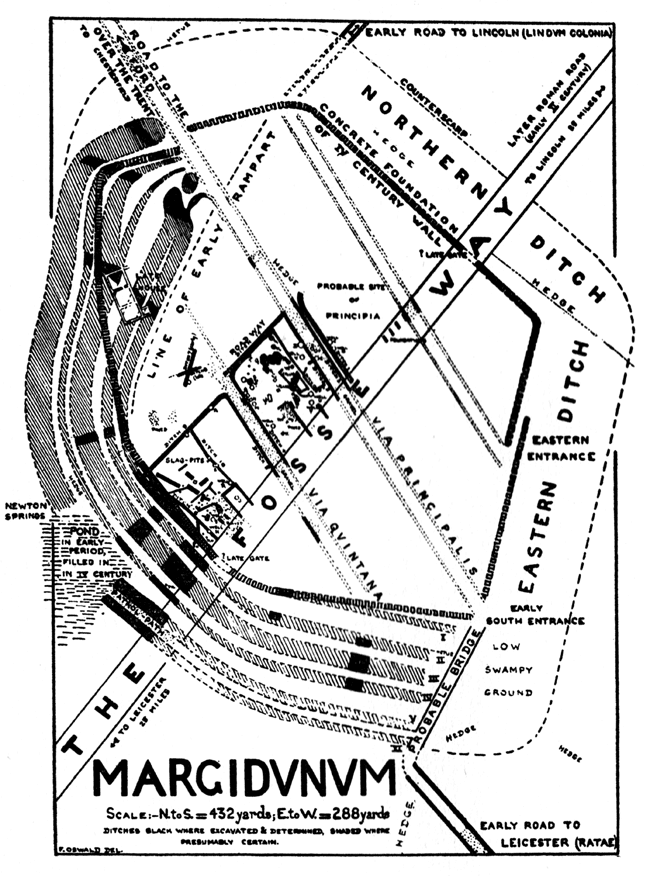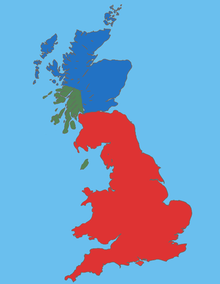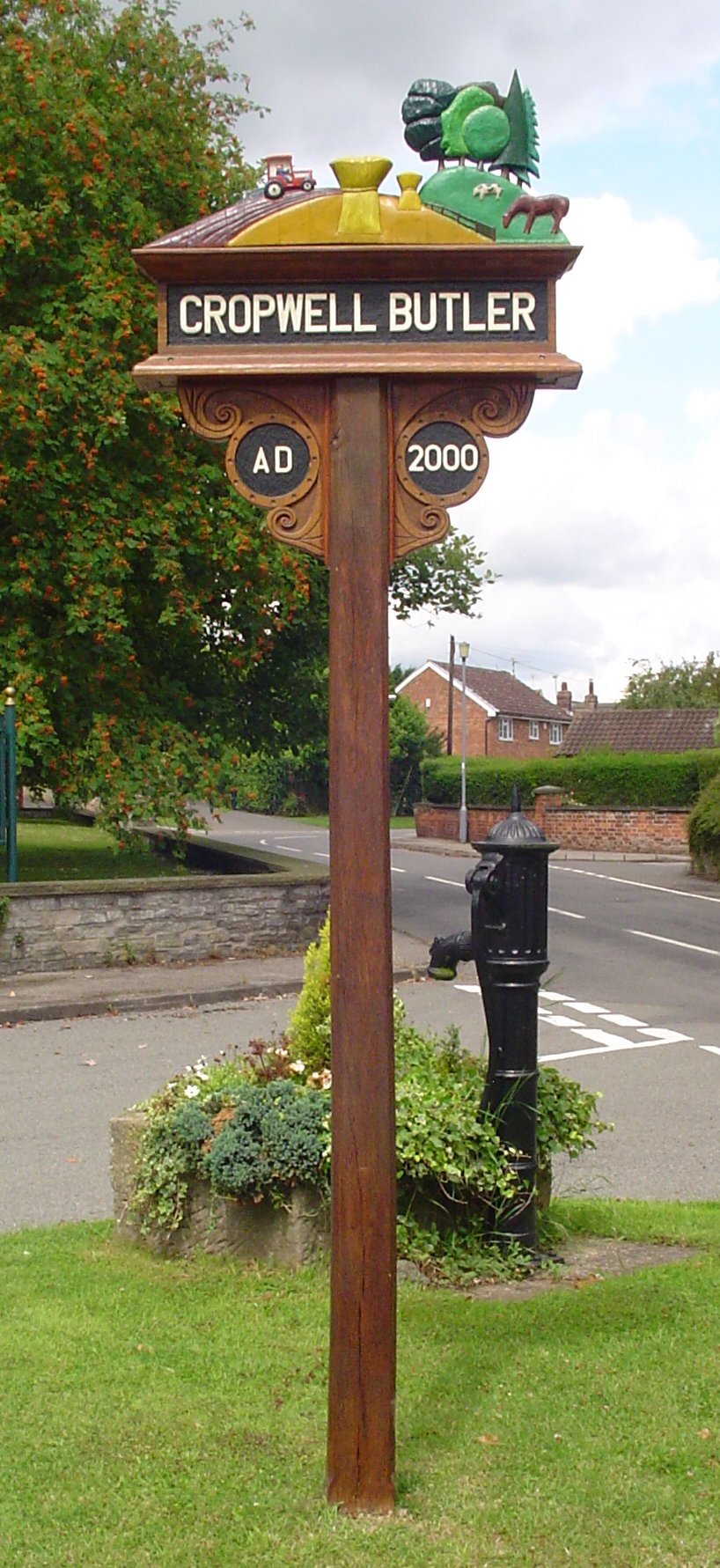|
Bingham, Nottinghamshire
Bingham is a market town and civil parish in the Rushcliffe borough of Nottinghamshire, England, east of Nottingham, 12 miles (18.8 km) south-west of Newark-on-Trent and 15 miles (23.3 km) west of Grantham. The town had a population of 9,131 at the 2011 United Kingdom census, 2011 census (up from 8,655 in 2001 United Kingdom census, 2001), with the population now sitting at 10,080 from the results of the 2021 United Kingdom census, 2021 census data. Bingham is twinned with Wallenfels in Bavaria, Germany. Music groups have visited to and from the twin towns, and a beer festival is held in Bingham every year. Geography Bingham lies near the junction of the A46 road, A46 (following an old Roman road, the Fosse Way) between Leicester and Newark-on-Trent and the A52 road, A52 between Nottingham and Grantham. Neighbouring communities are Radcliffe-on-Trent, East Bridgford, Car Colston, Scarrington, Aslockton, Whatton-in-the-Vale, Tithby and Cropwell Butler. History Margidu ... [...More Info...] [...Related Items...] OR: [Wikipedia] [Google] [Baidu] |
Rushcliffe
Rushcliffe is a Non-metropolitan district, local government district with Borough status in the United Kingdom, borough status in south Nottinghamshire, England. Its council is based in West Bridgford. The borough also includes the towns of Bingham, Nottinghamshire, Bingham and Cotgrave as well as numerous villages and surrounding rural areas. Some of the built-up areas in the north-west of the borough, including West Bridgford, form part of the Nottingham Urban Area. The neighbouring districts are Borough of Broxtowe, Broxtowe, Nottingham, Borough of Gedling, Gedling, Newark and Sherwood, Borough of Melton, Melton, Borough of Charnwood, Charnwood, North West Leicestershire and Borough of Erewash, Erewash. History The district was formed on 1 April 1974 under the Local Government Act 1972. The new district covered the whole area of two former districts and part of a third, which were all abolished at the same time: *Basford Rural District (part) *Bingham Rural District *West Brid ... [...More Info...] [...Related Items...] OR: [Wikipedia] [Google] [Baidu] |
Fosse Way
The Fosse Way was a Roman road built in Britain during the first and second centuries AD that linked Isca Dumnoniorum (Exeter) in the southwest and Lindum Colonia ( Lincoln) to the northeast, via Lindinis ( Ilchester), Aquae Sulis ( Bath), Corinium (Cirencester), and Ratae Corieltauvorum (Leicester). Toponym The word Fosse is derived from the Latin , meaning 'ditch'. For the first few decades after the Roman invasion of Britain in 43 AD, the Fosse Way marked the western frontier of Roman rule in Iron Age Britain. It is possible that the road began as a defensive ditch that was later filled in and converted into a road, or possibly a defensive ditch ran alongside the road for at least some of its length. Route The road joined Akeman Street and Ermin Way at Cirencester, crossed Watling Street at ''Venonis'' ( High Cross) south of Leicester, and joined Ermine Street at Lincoln. The Antonine Itinerary (a 2nd-century Roman register of roads) includes the section ... [...More Info...] [...Related Items...] OR: [Wikipedia] [Google] [Baidu] |
Celtic Britons
The Britons ( *''Pritanī'', , ), also known as Celtic Britons or Ancient Britons, were the Celtic people who inhabited Great Britain from at least the British Iron Age until the High Middle Ages, at which point they diverged into the Welsh, Cornish, and Bretons (among others). They spoke Common Brittonic, the ancestor of the modern Brittonic languages. The earliest written evidence for the Britons is from Greco-Roman writers and dates to the Iron Age. Ancient Britain was made up of many tribes and kingdoms, associated with various hillforts. The Britons followed an ancient Celtic religion overseen by druids. Some of the southern tribes had strong links with mainland Europe, especially Gaul and Belgica, and minted their own coins. The Roman Empire conquered most of Britain in the 1st century AD, creating the province of Britannia. The Romans invaded northern Britain, but the Britons and Caledonians in the north remained unconquered, and Hadrian's Wall became the edge ... [...More Info...] [...Related Items...] OR: [Wikipedia] [Google] [Baidu] |
Coritani
The Corieltauvi (also the Coritani, and the Corieltavi) were a Celtic tribe living in Britain prior to the Roman conquest, and thereafter a ''civitas'' of Roman Britain. Their territory was in what is now the English East Midlands. They were bordered by the Brigantes to the north, the Cornovii to the west, the Dobunni and Catuvellauni to the south, and the Iceni to the east. Their capital was called ''Ratae Corieltauvorum'', known today as Leicester. Late Iron Age The Corieltauvi were a largely agricultural people who had few strongly defended sites or signs of centralised government. They appear to have been a federation of smaller, self-governing tribal groups. From the beginning of the 1st century, they began to produce inscribed coins: almost all featured two names, and one series had three, suggesting they had multiple rulers. The names on the earliest coins are so abbreviated as to be unidentifiable. Later coins feature the name of Volisios, apparently the paramount king ... [...More Info...] [...Related Items...] OR: [Wikipedia] [Google] [Baidu] |
Plan Of Margidunum 1927
A plan is typically any diagram or list of steps with details of timing and resources, used to achieve an objective to do something. It is commonly understood as a temporal set of intended actions through which one expects to achieve a goal. For spatial or planar topologic or topographic sets see map. Plans can be formal or informal: * Structured and formal plans, used by multiple people, are more likely to occur in projects, diplomacy, careers, economic development, military campaigns, combat, sports, games, or in the conduct of other business. In most cases, the absence of a well-laid plan can have adverse effects: for example, a non-robust project plan can cost the organization time and money. * Informal or ad hoc plans are created by individuals in all of their pursuits. The most popular ways to describe plans are by their breadth, time frame, and specificity; however, these planning classifications are not independent of one another. For instance, there is a close r ... [...More Info...] [...Related Items...] OR: [Wikipedia] [Google] [Baidu] |
Cropwell Butler
Cropwell Butler is a village and civil parish in the borough of Rushcliffe in Nottinghamshire, United Kingdom, one mile east of the A46, under the NG12 postcode. It shares a parish council with Tithby and is adjacent to the south to Cropwell Bishop. Location and governance The civil parish population recorded in the 2011 census was 585, increasing to 651 at the 2021 census. Some of the newly built Upper Saxondale residential area also falls within the parish boundary. Cropwell Butler shares with Tithby a parish council that meets once a month. The village forms part of the Cropwell Ward of the Borough of Rushcliffe and of the Parliamentary Constituency of Rushcliffe. The county authority is Nottinghamshire. Historical events A post windmill at Cropwell Butler () was blown down in 1837. The miller escaped, but with severe bruising, by hiding in a hollow place under a beam. During the Second World War, German bombers left a trail of devastation across the Nottingham area ... [...More Info...] [...Related Items...] OR: [Wikipedia] [Google] [Baidu] |
Tithby
Tithby (sometimes spelt "Tythby", locally pronounced "Tidby") is an English hamlet in the Rushcliffe borough of Nottinghamshire, about south of the market town of Bingham. The civil parishes of Tithby and Wiverton Hall have a joint annual parish meeting.RushcliffRetrieved 20 July 2017./ref> Tithby reported a population of 69 people at the 2021 census. Tithby has 6 listed buildings including a K6 Telephone Kiosk Location and governance Tithby is made up largely of farms and farmhouses, much like other local villages such as Colston Bassett, Cropwell Butler, Cropwell Bishop, Langar, and Barnstone. Tithby shares a parish meeting with Wiverton Hall. The village forms part of the Borough of Rushcliffe and of the Parliamentary Constituency of Rushcliffe. The county authority is Nottinghamshire. Amenities and transport The nearest schools, shops and other amenities are in Bingham and Cropwell Bishop. There is a pub, the ''Plough Inn'', at Cropwell Butler (1.2 miles/2 km). Ti ... [...More Info...] [...Related Items...] OR: [Wikipedia] [Google] [Baidu] |
Whatton-in-the-Vale
Whatton-in-the-Vale is a village and civil parish in the Rushcliffe district, in the county of Nottinghamshire, England. It lies in the Vale of Belvoir, with the River Smite to the west and a subsidiary, the River Whipling to the east, mainly north of the trunk A52 road, east of Nottingham. The parish had a population of 843 at the 2011 census, increasing to 874 at the 2021 census. Etymology The place name seems to contain the Old English word ''hwǣte'' for wheat, + ''tūn'' (Old English) meaning an enclosure, a farmstead, a village, an estate, ''etc''., so "Farm where wheat is grown." "In the Vale," ''i. e.'' the Vale of Belvoir. The place appears as ''Watone'' in the Domesday Book of 1086. Heritage Whatton Mill was a five-storey brick tower windmill built in 1820. It had four patent sails (sails with shutters instead of cloth), two of which were double. Milling ceased in about 1916. The capless tower is now a listed building. The Anglican Church of St. John of Beverl ... [...More Info...] [...Related Items...] OR: [Wikipedia] [Google] [Baidu] |
Aslockton
Aslockton is an English village and civil parish east of Nottingham and east of Bingham, on the north bank of the River Smite opposite Whatton-in-the-Vale. The parish is also adjacent to Scarrington, Thoroton and Orston and within the Rushcliffe borough of Nottinghamshire. The population was recorded as 974 in the 2011 census, doubling to 1,937 at the 2021 census. Toponymy Appearing as ''Aslachetone'' in the Domesday Book of 1086, the place name seems to contain an Old Norse personal name ''Aslakr'' + ''tūn'' (Old English) meaning an enclosure, a farmstead, a village, an estate, etc., so "Farm or settlement of a man called Aslakr". There are 19 such place names (a Scandinavian personal name followed by ''tūn'' ) in Nottinghamshire, all of them in the Domesday survey, and all apparently ancient villages. Heritage All that remains of the 12th-century Aslockton Castle are some earthworks. The motte, called Cranmer's Mound, stands about 16 feet (5 m) high. Thomas Cran ... [...More Info...] [...Related Items...] OR: [Wikipedia] [Google] [Baidu] |
Scarrington
Scarrington is an English civil parish and small village in the Rushcliffe borough of Nottinghamshire, adjacent to Bingham, Car Colston, Hawksworth, Orston and Aslockton. Its had a population in the 2011 census of 183, falling to 167 at the 2021 census. It lies at Ordnance Survey grid reference SK7341 in the undulating farmland of the Vale of Belvoir, some from the town of Bingham and from a stretch of the Roman Fosse Way (A46) between Newark and Leicester.Scarrington Appraisal and Management PlaRetrieved 1 January 2016./ref> It is skirted by the A52 road between Nottingham and Grantham. Governance Most local government functions are performed by Rushcliffe Borough Council. The borough election results on 7 May 2015 confirmed Conservative control. Scarrington lies in Bingham East ward and its small population qualifies it only for a twice-yearly Parish Meeting, not a Parish Council. The member of Parliament (MP) for Newark, the constituency in which Scarrington is l ... [...More Info...] [...Related Items...] OR: [Wikipedia] [Google] [Baidu] |
Car Colston
Car Colston is an English village and civil parish in the Rushcliffe borough of Nottinghamshire. The population of the civil parish at the time of the 2011 census was 185, falling to 171 at the 2021 census. Location and transport Car Colston lies just off the A46 (the Fosse Way), 3 miles (4.8 km) north of Bingham and 2 miles (3.2 km) west of East Bridgford. It is also adjacent to Little Green, Screveton, Scarrington and Newton. There are seven buses a day that stop at Car Colston between Nottingham and Newark-on-Trent on Mondays to Saturdays . The nearest railway station is at Bingham, which has services every one or two hours towards Nottingham, Grantham or Skegness. Governance Since the parish is small, it has a parish meeting instead of a parish council. The village forms a conservation area, which was last reviewed and extended in June 2009. The member of Parliament (MP) for the Newark constituency, to which Car Colston belongs, is the Conservative Robe ... [...More Info...] [...Related Items...] OR: [Wikipedia] [Google] [Baidu] |
East Bridgford
East Bridgford is a village and civil parish in the Rushcliffe borough of Nottinghamshire, east of the city of Nottingham. It had a population of 1,814 at the 2011 census, falling to 1,763 at the 2021 census. The village adjoins the south bank of the River Trent, opposite the village of Gunthorpe. It is on the Trent Valley Way. East Bridgford's annual village show is run by the village Horticultural Society, established in 1864, and held every Feast Week. History The population of the village was 526 in 1801, 1155 in 1851, and 756 in 1901 The parish church is that of St. Peter. Education The village has one school, St Peter's Church of England Primary School. Rated Outstanding in its last inspection report by Ofsted (2007), it was termed "an outstanding school, in which pupils... reach exceptionally high standards." It came fifth in the country in 2011 by SAT scores achieved. Windmills There existed two red-brick windmills in East Bridgford, one at the northern and one ... [...More Info...] [...Related Items...] OR: [Wikipedia] [Google] [Baidu] |




